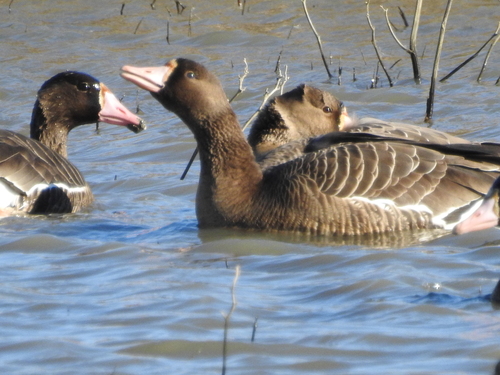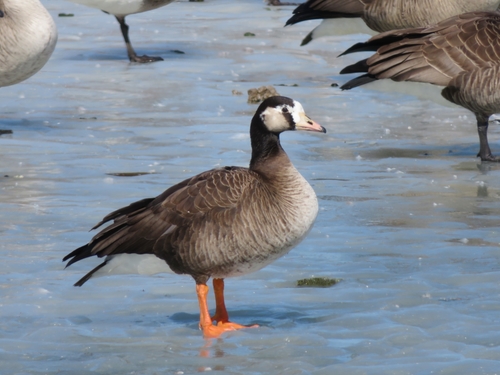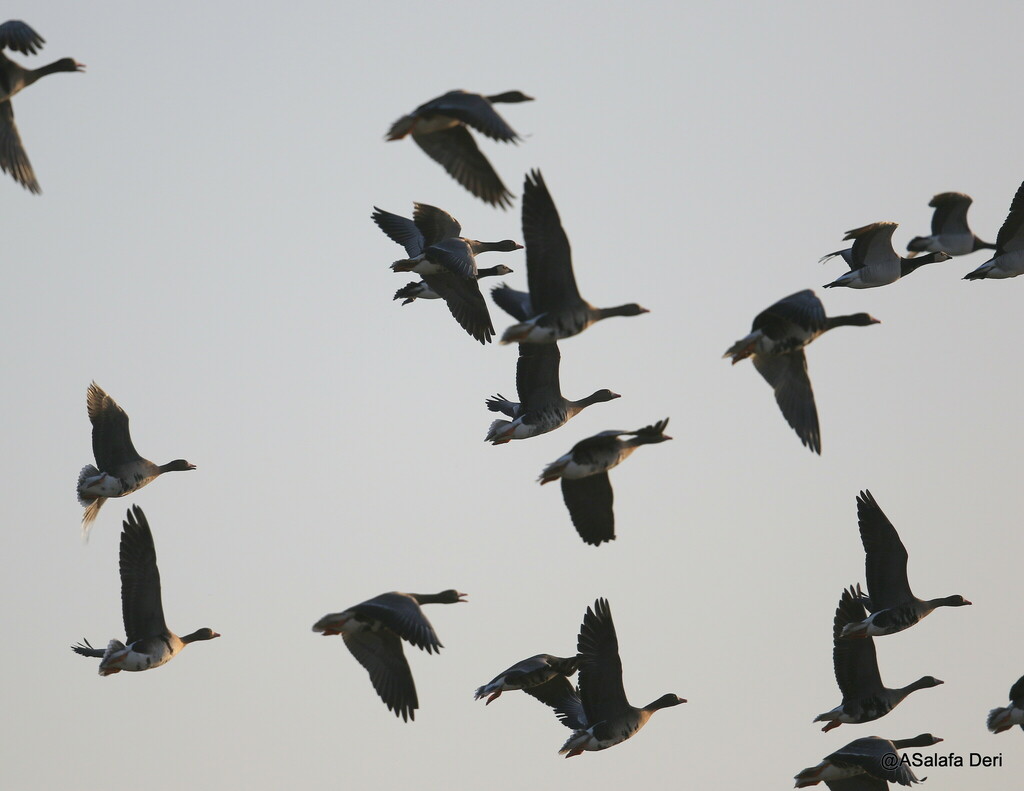|
| Common Animals Fish Mushrooms Flora |
|
Anser albifrons |
https://en.wikipedia.org/wiki/Greater_white-fronted_goose
July: Hatching. Parents care for the young and teach them to forage.
May show aggression when defending nest. Generally safe. Hunting white-fronted goose common in northern regions. Meat consumed at festive tables. Feathers used for clothing and pillows.
Inhabits northern and temperate zones of Eurasia and North America. Prefers wet meadows, marshes, and coastal areas. Feeds on grass, grains, and aquatic vegetation.
Hunting from blinds near water bodies and meadows Use of calls and decoys Hunting at dusk and dawn
Choose quiet spots with good cover. Use camouflage clothing and nets. Hunting effective in low visibility and fog.
Quick dressing on site. Feathers suitable for pillows and decorative items. Pay attention to skin preservation. Meat is highly valued, especially autumn birds after fattening.
Breast: Frying, roasting
Thigh: Braising, frying
Thigh: Braising, frying
Roasted White-fronted Goose (Oven roasting)
Meat tender and juicy
Meat tender and juicy
1. Rub the carcass with spices and herbs.
2. Roast at 180°C for about 1.5 hours.
3. Serve with vegetable side dish.
2. Roast at 180°C for about 1.5 hours.
3. Serve with vegetable side dish.
Braised White-fronted Goose with Vegetables (Braising)
Meat tender and flavorful
Meat tender and flavorful
1. Sauté meat with onions and carrots.
2. Add spices and broth.
3. Braise under lid for about 1 hour.
2. Add spices and broth.
3. Braise under lid for about 1 hour.
 Germany · Niedersachsen · Leer
Germany · Niedersachsen · Leer



































































